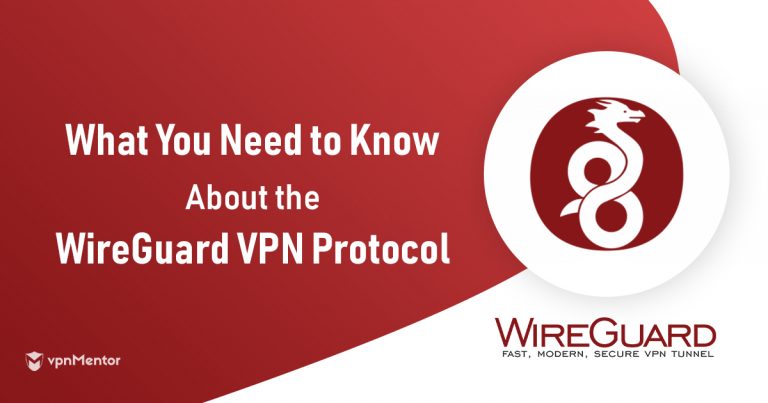Featured
Table of Contents
Wireguard: Fast, Modern, Secure Vpn Tunnel
It is currently under heavy advancement, however currently it may be considered as the most safe and secure, most convenient to utilize, and simplest VPN solution in the market. Wire, Guard aims to be as simple to configure and deploy as SSH. A VPN connection is made simply by exchanging very easy public secrets exactly like exchanging SSH secrets and all the rest is transparently managed by Wire, Guard.
Wire, Guard provides an incredibly fundamental yet effective user interface. Wire, Guard has actually been designed with ease-of-implementation and simplicity in mind.
You then might advance to installation and checking out the quickstart instructions on how to use it. If you have an interest in the internal inner operations, you may be interested in the short summary of the procedure, or go more in depth by checking out the technical whitepaper, which enters into more detail on the procedure, cryptography, and principles.
![Is Wireguard The Future Of New Vpns? [Updated 2022]](https://comptiacdn.azureedge.net/webcontent/images/default-source/blogs/picture4-configuring-wireguard.png?sfvrsn=9b0f40b3_4)
This user interface functions as a tunnel user interface. Wire, Guard associates tunnel IP addresses with public keys and remote endpoints. When the interface sends out a packet to a peer, it does the following: This package is indicated for 192. 168.30. 8. Which peer is that? Let me look ... Okay, it's for peer ABCDEFGH.
Wireguard: The Next Generation Vpn Protocol
If not, drop it. Behind the scenes there is much occurring to provide correct personal privacy, authenticity, and ideal forward secrecy, using advanced cryptography. At the heart of Wire, Guard is a concept called Cryptokey Routing, which works by associating public keys with a list of tunnel IP addresses that are enabled inside the tunnel (what is wireguard protocol and how does it work?).

Each peer has a public key. Public secrets are brief and easy, and are used by peers to confirm each other. They can be circulated for usage in configuration files by any out-of-band method, similar to how one may send their SSH public secret to a buddy for access to a shell server.
0/0 In the server setup, each peer (a customer) will be able to send packages to the network user interface with a source IP matching his corresponding list of enabled IPs. When a package is received by the server from peer g, N65Bk, IK ..., after being decrypted and validated, if its source IP is 10.
230, then it's enabled onto the user interface; otherwise it's dropped. In the server configuration, when the network user interface desires to send out a packet to a peer (a customer), it looks at that package's destination IP and compares it to each peer's list of permitted IPs to see which peer to send it to - what is wireguard protocol and how does it work?.
Wireguard Road Warrior Setup

10.10. 230, it will encrypt it using the general public key of peer g, N65Bk, IK ..., and then send it to that peer's latest Internet endpoint. In the client configuration, its single peer (the server) will have the ability to send packets to the network user interface with any source IP (considering that 0.
0/0 is a wildcard). For instance, when a packet is gotten from peer HIgo9x, Nz ..., if it decrypts and authenticates correctly, with any source IP, then it's allowed onto the interface; otherwise it's dropped. In the customer setup, when the network user interface wants to send a package to its single peer (the server), it will encrypt packets for the single peer with any destination IP address (given that 0.
0/0 is a wildcard). If the network interface is asked to send out a package with any destination IP, it will secure it using the public key of the single peer HIgo9x, Nz ..., and then send it to the single peer's most recent Web endpoint. To put it simply, when sending packets, the list of allowed IPs behaves as a sort of routing table, and when receiving packages, the list of allowed IPs behaves as a sort of gain access to control list.
Wire, Guard is totally capable of encapsulating one inside the other if required. Since all packages sent out on the Wire, Guard interface are encrypted and validated, and because there is such a tight coupling between the identity of a peer and the allowed IP address of a peer, system administrators do not require complicated firewall extensions, such as in the case of IPsec, however rather they can merely match on "is it from this IP?
Wireguard — A Closer Look

The customer configuration contains a preliminary endpoint of its single peer (the server), so that it understands where to send encrypted data prior to it has actually gotten encrypted information. The server setup doesn't have any initial endpoints of its peers (the clients). This is since the server finds the endpoint of its peers by examining from where properly validated information stems.
If you're having problem establishing Wire, Guard or utilizing it, the very best place to get aid is the #wireguard IRC channel on Libera. Chat. We also talk about advancement jobs there and plan the future of the job. Get involved in the Wire, Guard advancement discussion by joining the subscriber list.

Do not send out non-security-related concerns to this e-mail alias. Do not send out security-related problems to different e-mail addresses.
Wire, Guard is much faster than Open, VPN. It consumes 15% less data, handles network modifications much better, and seems protected. However, Open, VPN has been attempted and checked, is more privacy-friendly, and is supported by a bigger number of VPNs.
Wireguard Vpn — Is It Still Private, Secure, And Free In ...
We may receive compensation from the services and products discussed in this story, but the viewpoints are the author's own. Compensation may affect where offers appear. We have not consisted of all offered items or deals. Find out more about how we generate income and our editorial policies. Today, virtual personal networks (VPNs) have actually taken off, gaining popularity with those searching for additional security, privacy, and flexibility.
In this post Wire, Guard is a brand-new, open-source VPN protocol developed with advanced cryptography, which is the practice of coding delicate info so only the designated recipients can interpret its meaning. Designer Jason A.
Working with Wire, Guard couldn't be could not. Wire, Guard keeps it basic by operating with less than 4,000 lines of code compared to older VPN procedures that generally utilize thousands more.
Latest Posts
The 6 Best Vpn Stocks To Buy Right Now For August 2023
7 Best Vpn Services For Privacy & Security In 2022
10 Best Vpn Services For Startups 2023 - Truic